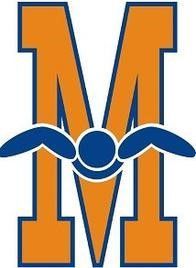ACTION PLAN TO ADDRESS BULLYING
PURPOSE
Bullying of any kind is unacceptable at Metroplex Aquatics and will not be tolerated. It is counterproductive to team spirit and can be devastating to the victim. The team is committed to providing a safe, caring, and friendly environment for all members.
If bullying occurs, all athletes and parents should know that incidents will be addressed promptly and effectively. Anyone aware of bullying is expected to report it to a coach, board member, or athlete/mentor.
Objectives of the Team’s Bullying Policy and Action Plan:
- Clearly communicate that bullying will not be tolerated in any form.
- Define bullying and provide board members, coaches, parents, and swimmers with a clear understanding of what constitutes bullying.
- Ensure parents, swimmers, and coaching staff are aware of the policy and protocol for addressing bullying issues.
- Clarify how to report bullying.
- Demonstrate that Metroplex Aquatics takes bullying seriously and that all swimmers and parents will be supported when bullying is reported.
WHAT IS BULLYING?
The USA Swimming Code of Conduct prohibits bullying. Generally, bullying is the use of aggression—whether intentional or not—that causes pain or distress to another person.
Definition (USA Swimming Code 304.3.7):
Bullying is the severe or repeated use by one or more USA Swimming members of oral, written, electronic, or other technological expression, image, sound, data, or intelligence of any nature, or a physical act or gesture, directed at another member that has the effect of:
i. Causing physical or emotional harm or damage to property.
ii. Placing the member in reasonable fear of harm or property damage.
iii. Creating a hostile environment at any USA Swimming activity.
iv. Infringing on the rights of the member at any USA Swimming activity.
v. Materially and substantially disrupting training or the orderly operation of any USA Swimming activity (including practices, workouts, and other team events).
REPORTING PROCEDURE
Athletes who feel they have been bullied should consider one or more of the following:
- Talk to a parent.
- Talk to a Team Coach, Board Member, or designated individual.
- Write a letter or email to a Team Coach, Board Member, or designated individual.
- Report to USA Swimming Safe Sport staff.
There is no strict time limit for filing a complaint, but complaints should be made as soon as possible to ensure accurate information and timely intervention.
HOW WE ADDRESS BULLYING
Stop Bullying on the Spot
If bullying occurs during team-related activities:
- Intervene immediately. Seek help if needed.
- Separate the individuals involved.
- Ensure everyone’s safety.
- Attend to immediate medical or mental health needs.
- Stay calm and reassure everyone involved, including bystanders.
- Model respectful behavior when intervening.
Determine What Happened
- Gather facts:
- Keep involved individuals separate.
- Collect accounts from multiple sources, including adults and athletes.
- Listen without blaming.
- Avoid labeling the act as bullying until all facts are collected.
- Collect all available information, including social or cyberbullying evidence.
- Determine if it is bullying:
- Review the USA Swimming definition of bullying.
- Consider:
- History between individuals.
- Past conflicts.
- Presence of a power imbalance (not always physical).
- Whether the behavior has occurred before or may recur.
- “Who started it” is irrelevant; provoking behavior does not excuse bullying.
- Once bullying is confirmed, support all involved individuals.
Supporting the Athletes Involved
1. Support the bullied athlete:
- Listen and focus on the child.
- Assure them that bullying is not their fault.
- Collaborate with the child, parents, coaches, and teammates to resolve the situation.
- Minimize routine changes and avoid singling out the child.
- Maintain open communication and develop a clear plan of action.
- Persistently support the child; bullying may take time to stop.
2. Address the bullying behavior:
- Explain to the child what behavior is harmful.
- Calmly communicate that bullying will not be tolerated.
- Help the child understand underlying reasons for the behavior (insecurity, stress, prior bullying).
- Involve the child in making amends:
- Apologize in writing.
- Do a good deed for the bullied athlete, team, or community.
- Repair or replace damaged property.
- Avoid ineffective strategies:
- Zero-tolerance or “three strikes” suspensions.
- Conflict resolution or peer mediation for bullying.
- Follow up with guidance, praise acts of kindness, and reinforce good behavior.
3. Support bystanders:
- Encourage bystanders to:
- Be a friend to the person bullied.
- Report to a trusted adult.
- Help the bullied athlete safely exit the situation.
- Model respectful behavior.
- Avoid giving attention to the bully; walk away if necessary.

